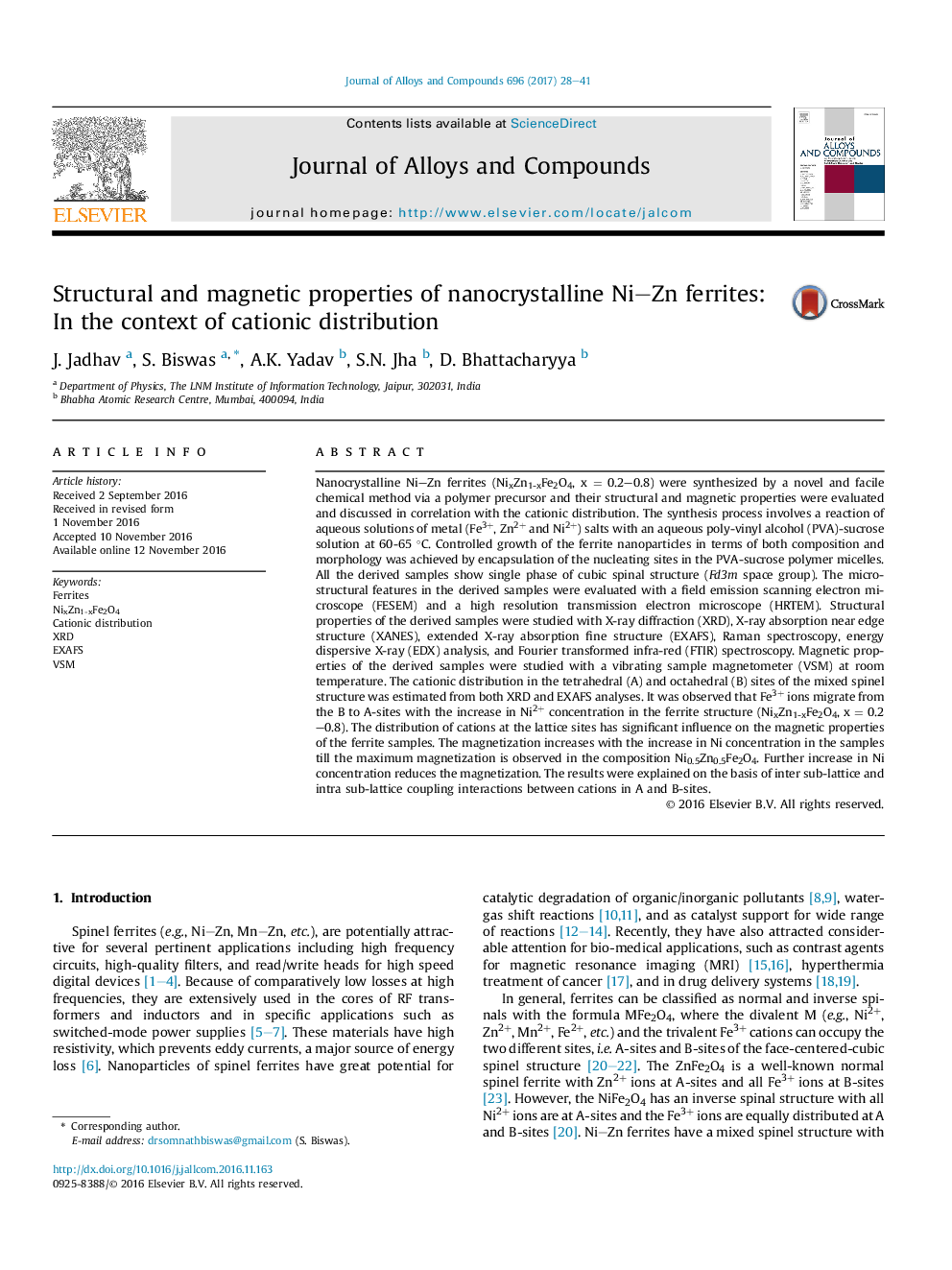| Article ID | Journal | Published Year | Pages | File Type |
|---|---|---|---|---|
| 5461266 | Journal of Alloys and Compounds | 2017 | 14 Pages |
Abstract
Nanocrystalline NiZn ferrites (NixZn1-xFe2O4, x = 0.2-0.8) were synthesized by a novel and facile chemical method via a polymer precursor and their structural and magnetic properties were evaluated and discussed in correlation with the cationic distribution. The synthesis process involves a reaction of aqueous solutions of metal (Fe3+, Zn2+ and Ni2+) salts with an aqueous poly-vinyl alcohol (PVA)-sucrose solution at 60-65 °C. Controlled growth of the ferrite nanoparticles in terms of both composition and morphology was achieved by encapsulation of the nucleating sites in the PVA-sucrose polymer micelles. All the derived samples show single phase of cubic spinal structure (Fd3m space group). The microstructural features in the derived samples were evaluated with a field emission scanning electron microscope (FESEM) and a high resolution transmission electron microscope (HRTEM). Structural properties of the derived samples were studied with X-ray diffraction (XRD), X-ray absorption near edge structure (XANES), extended X-ray absorption fine structure (EXAFS), Raman spectroscopy, energy dispersive X-ray (EDX) analysis, and Fourier transformed infra-red (FTIR) spectroscopy. Magnetic properties of the derived samples were studied with a vibrating sample magnetometer (VSM) at room temperature. The cationic distribution in the tetrahedral (A) and octahedral (B) sites of the mixed spinel structure was estimated from both XRD and EXAFS analyses. It was observed that Fe3+ ions migrate from the B to A-sites with the increase in Ni2+ concentration in the ferrite structure (NixZn1-xFe2O4, x = 0.2-0.8). The distribution of cations at the lattice sites has significant influence on the magnetic properties of the ferrite samples. The magnetization increases with the increase in Ni concentration in the samples till the maximum magnetization is observed in the composition Ni0.5Zn0.5Fe2O4. Further increase in Ni concentration reduces the magnetization. The results were explained on the basis of inter sub-lattice and intra sub-lattice coupling interactions between cations in A and B-sites.
Related Topics
Physical Sciences and Engineering
Materials Science
Metals and Alloys
Authors
J. Jadhav, S. Biswas, A.K. Yadav, S.N. Jha, D. Bhattacharyya,
